Sharp Chest Pain
14
July
2021

One of the many alerting health symptoms one highly fears is sharp pain the chest. Although it may be caused by minor health problems, it can also indicate a life-threatening heart attack. Knowing more and familiarizing on the subject will allow one to distinguish better what might the severe chest pain be related to. Yet whenever experiencing severe pain in the chest area we advise you to seek the emergency room to make sure you are not experiencing a heart attack.
Heart Attack and Chest Pain:
According to the American Heart Association (2021), one must not wait until heart attack signs become severe to seek medical help.
Warning signs to pay attention to that often start slowly with mild pain and discomfort are:
-
Chest discomfort: Most heart attacks involve discomfort in the center of the chest that lasts more than a few minutes – or it may go away and then return. It can feel like uncomfortable pressure, squeezing, fullness, or pain.
-
Discomfort in other areas of the upper body: Symptoms can include pain or discomfort in one or both arms, the back, neck, jaw or stomach.
-
Shortness of breath: This can occur with or without chest discomfort.
-
Pain, which lasts longer than 15 minutes.
-
Other signs: Other possible signs include breaking out in a cold sweat, nausea, or lightheadedness.
The above signs indicate that you might be undergoing a heart attack and must seek emergency care immediately.
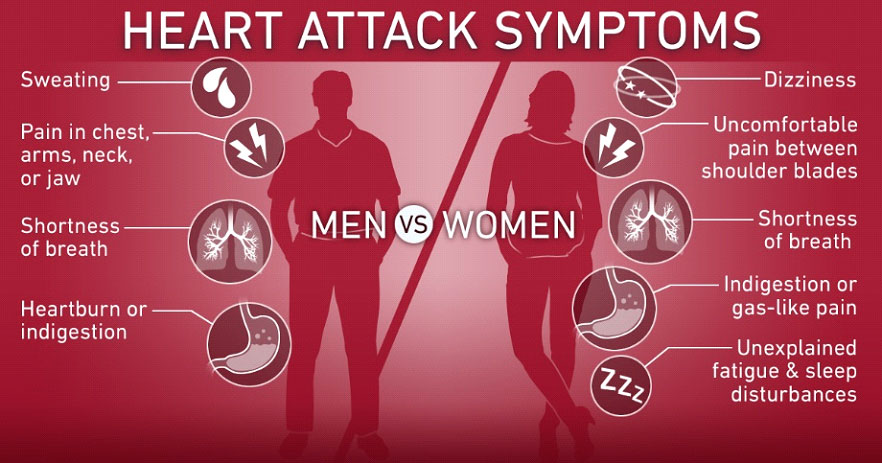
Symptoms vary between men and women. Women’s most common heart attack symptom is chest pain (angina) or discomfort. But women are somewhat more likely than men to experience some of the other common symptoms, particularly shortness of breath, nausea/vomiting, and back or jaw pain.
Every minute matters, if you have the slightest doubt that what you are experiencing is a heart attack seek the emergency room immediately. Time is limited when associated with heart attacks and it is better to get checked. Always contact the ambulance as they can start providing you with medical assistance that would help increase your chances of survival and are well trained to assist you.
Other causes for severe chest pain:
In most of the cases, chest pain is not associated with heart attack and is a cause of other medical problems. Symptoms that accompany the pain are what help the doctor identify the cause. The symptoms you are experiencing might give you an idea of the underlying reason behind it. Yet please don't self-diagnose – see a GP if you're worried.
-
Indigestion and heart burn: Chest pain that is triggered after eating, bringing up food, or bitter tasting fluids is often a cause of heart burn or indigestion, and it makes the person feel bloated and uncomfortable.
You can have the following symptoms after eating or drinking:
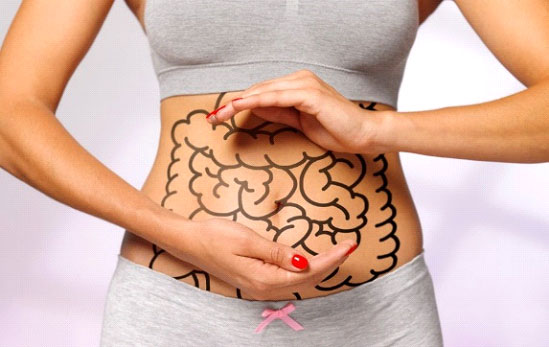
-
Heartburn –a burning feeling in the chest caused by stomach acid travelling up towards the throat (acid reflux). If it keeps happening, it's called gastroesophageal reflux disease (GORD).
-
feeling full and bloated
-
feeling sick
-
belching and farting
bringing up food or bitter-tasting fluids into your mouth
-
cut down on tea, coffee, cola, or alcohol.
prop your head and shoulders up in bed – this can stop stomach acid from coming up while you’re asleep.
lose weight if you're overweight.
eat 3 to 4 hours before going to bed.
have rich, spicy, or fatty foods.
take ibuprofen or aspirin – this can make indigestion worse.
Feeling severe indigestion
Feeling severe pain
Are 55 or older
Have lost a lot of weight without meaning to
Have difficulty swallowing (dysphagia)
Keep getting sick
Have iron deficiency anemia
Feel like you have a lump in your stomach
Have bloody vomit or poo
-
Sudden
-
Severe
-
Accompanied by pressure or squeezing in the chest
-
The acid in your stomach: it can irritate the stomach lining or your throat. This causes indigestion and gives you a burning feeling and pain.
-
Medicines
-
Smoking
-
Alcohol
-
you have pain, tenderness, or weakness – often around your ankle, foot, wrist, thumb, knee, leg or back.
-
the injured area is swollen or bruised.
-
you cannot put weight on the injury or use it normally.
you have muscle spasms or cramping – where your muscles painfully tighten on their own.
Rest: stop any exercise or activities and try not to put any weight on the injury.
Ice: apply an ice pack (or a bag of frozen vegetables wrapped in a tea towel) to the injury for up to 20 minutes every 2 to 3 hours.
Compression: wrap a bandage around the injury to support it.
Elevate: keep it raised on a pillow as much as possible.
Physical symptoms:
faster, irregular or more noticeable heartbeat
feeling lightheaded and dizzy
headaches
chest pains
loss of appetite
sweating
breathlessness
feeling hot
shaking
Mental symptoms:
feeling tense or nervous
being unable to relax
worrying about the past or future
feeling tearful
not being able to sleep
difficulty concentrating
fear of the worst happening
intrusive traumatic memories
obsessive thoughts
Behavior changes:
not being able to enjoy your leisure time
difficulty looking after yourself
struggling to form or maintain relationships
worried about trying new things
avoiding places and situations that create anxiety
compulsive behaviors, such as constantly checking things
a racing heartbeat
feeling faint, dizzy or lightheaded
feeling that you're losing control
sweating, trembling or shaking
shortness of breath or breathing very quickly
a tingling in your fingers or lips
feeling sick (nausea)
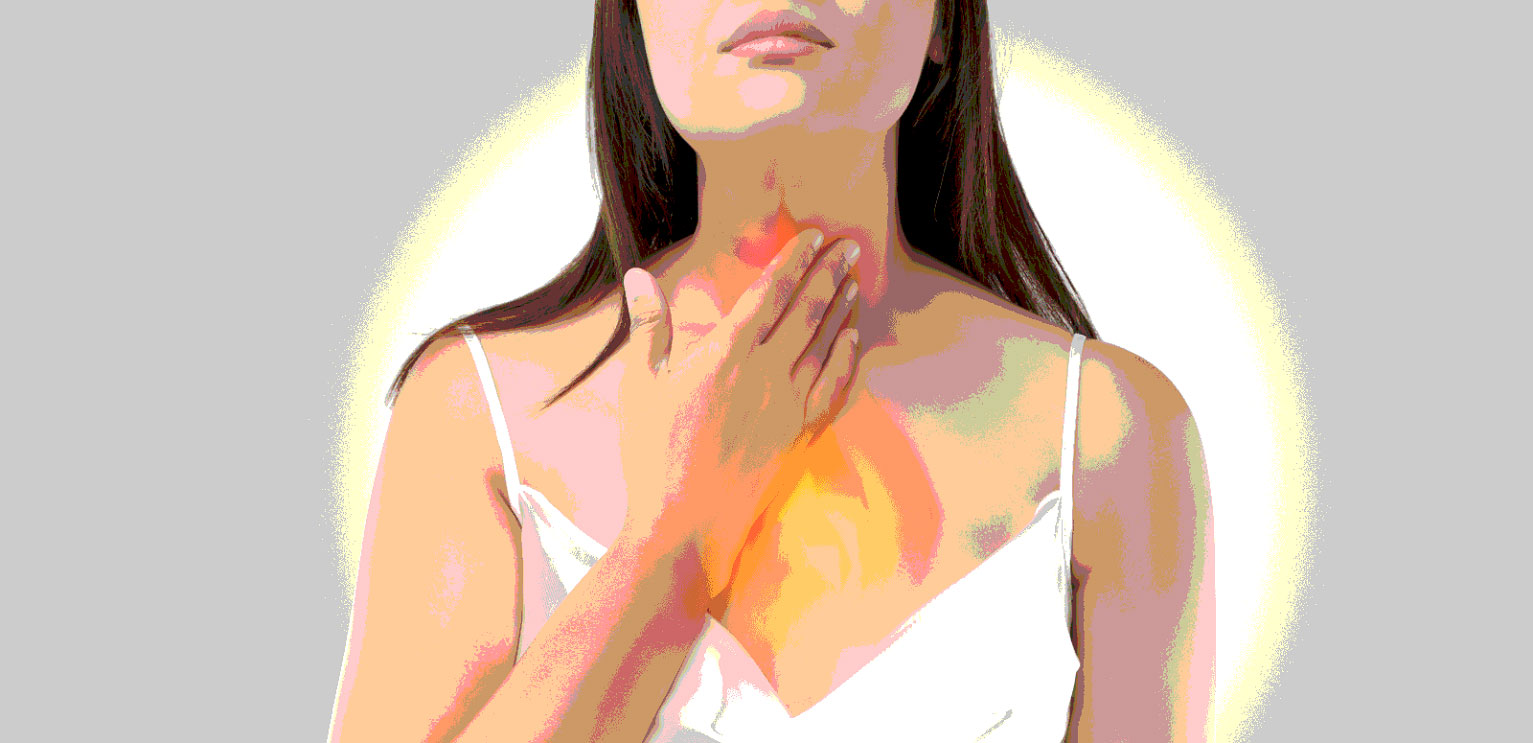
Do’s and don’ts to treat indigestion:
Do’s:
Don’ts:
See a GP if you are:
It is important to note that these symptoms can be a sign of something more serious.
What causes indigestion?
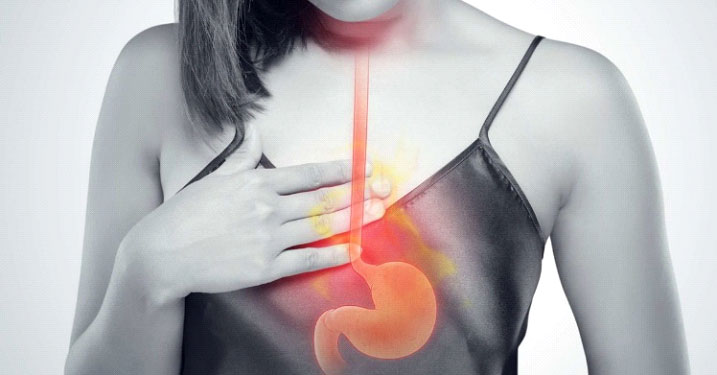
While it seems like it is a given, emergency treatment should be one’s first option in the cause when the pain in the left arm is:
Now that the emergency information is laid out on the table, here are some factors which will distinguish the “I can take care of myself” kind of pain and the “this is very serious and should be treated professionally” pain:
Stress can make indigestion worse.
Chest sprain or strain:
It's likely for the chest pain to be a sprain or strain if:
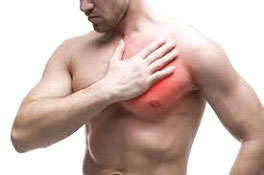
How to treat sprains and strains yourself
For the first couple of days, follow the 4 steps known as RICE therapy to help bring down swelling and support the injury:
To help prevent swelling, try to avoid heat (such as hot baths and heat packs), alcohol, and massages for the first couple of days.
If you can move the injured area without feeling pain, try to keep moving it so the joint or muscle does not become stiff.
Note: Speak to a pharmacist about the best treatment for you. They might suggest tablets, a cream, or gel to rub on the skin.
How long does it take for a sprain or strain to heal?
After 2 weeks, most sprains and strains will feel better. Avoid strenuous exercise such as running for up to 8 weeks, as there’s a risk of further damage. Severe sprains and strains can take months to get back to normal.
Anxiety or a panic attack
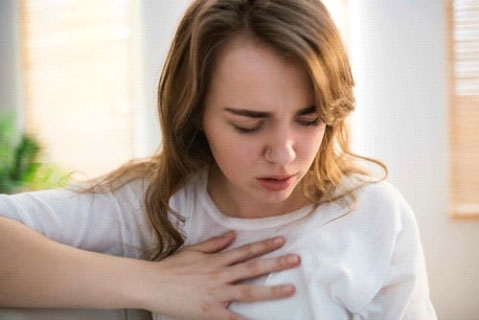
Chest pain triggered by worries or stressful situations; fast heartbeats, sweating, and dizziness are often a result of anxiety or a panic attack. Anxiety is a feeling of unease, such as worry or fear that can be mild or severe.
Symptoms of anxiety
Symptoms of a panic attack
If you experience sudden, intense anxiety and fear, it might be the symptoms of a panic attack. Other symptoms may include:
A panic attack usually lasts 5 to 30 minutes. They can be very frightening, but they're not dangerous and should not harm you.
- Chest pain that gets worse when you breathe in and out and coughing up yellow or green mucus with a high temperature, is often caused by chest infection or pneumonia. A chest infection is an infection of the lungs or large airways. Some chest infections are mild and clear up on their own, but others can be severe and life threatening. While pneumonia is the swelling (inflammation) of the tissue in one or both lungs. It's usually caused by a bacterial infection. It can also be caused by a virus, such as coronavirus (COVID-19).
Symptoms of pneumonia
The symptoms of pneumonia can develop suddenly over 24 to 48 hours, or they may come on more slowly over several days.
Common symptoms of pneumonia include:
- a cough – which may be dry, or produce thick yellow, green, brown, or blood-stained mucus (phlegm).
difficulty breathing – your breathing may become rapid and shallow, and you may feel breathless, even when resting.
rapid heartbeat.
high temperature.
feeling generally unwell.
sweating and shivering.
loss of appetite.
chest pain – which gets worse when breathing or coughing
Less common symptoms include:
coughing up blood (haemoptysis).
headaches.
fatigue.
feeling sick or being sick.
wheezing.
joint and muscle pain.
feeling confused and disorientated, particularly in elderly people
Chest infections often result from a cold or flu
The main symptoms are:
a chesty cough – you may cough up green or yellow mucus.
wheezing and shortness of breath.
chest pain or discomfort.
a high temperature.
a headache.
aching muscles.
Tiredness.
These symptoms can be unpleasant, but they usually get better on their own in about 7 to 10 days. The cough and mucus can last up to 3 weeks.

The first signs of shingles can be:
a tingling or painful feeling in an area of the skin
a headache or feeling generally unwell
A rash will appear a few days later.
Usually you get the shingles rash:
On your chest and tummy,
Yet it can also appear anywhere on your body including on your face, eyes and genitals.
The rash appears as blotches on your skin, on 1 side of your body only. A rash on both the left and right of your body is unlikely to be shingles.
References:
Iftikhar, Noreen. “Sudden, Sharp Chest Pain that Goes Away: What is it?”. Healthline. 15
April 2019. Retrieved from
https://www.healthline.com/health/heart-attack/sudden-sharp-pain-in-chest-that-goes-away-quickly
Stuart, Annie. “What’s Causing my Chest Pain?”. WebMD. 8 March 2021. Retrieved
from:
https://www.webmd.com/pain-management/guide/whats-causing-my-chest-pain
If you or anyone you know is suffering from pain, call us today on (469) 562 4188 to book an appointment with our expert doctors.